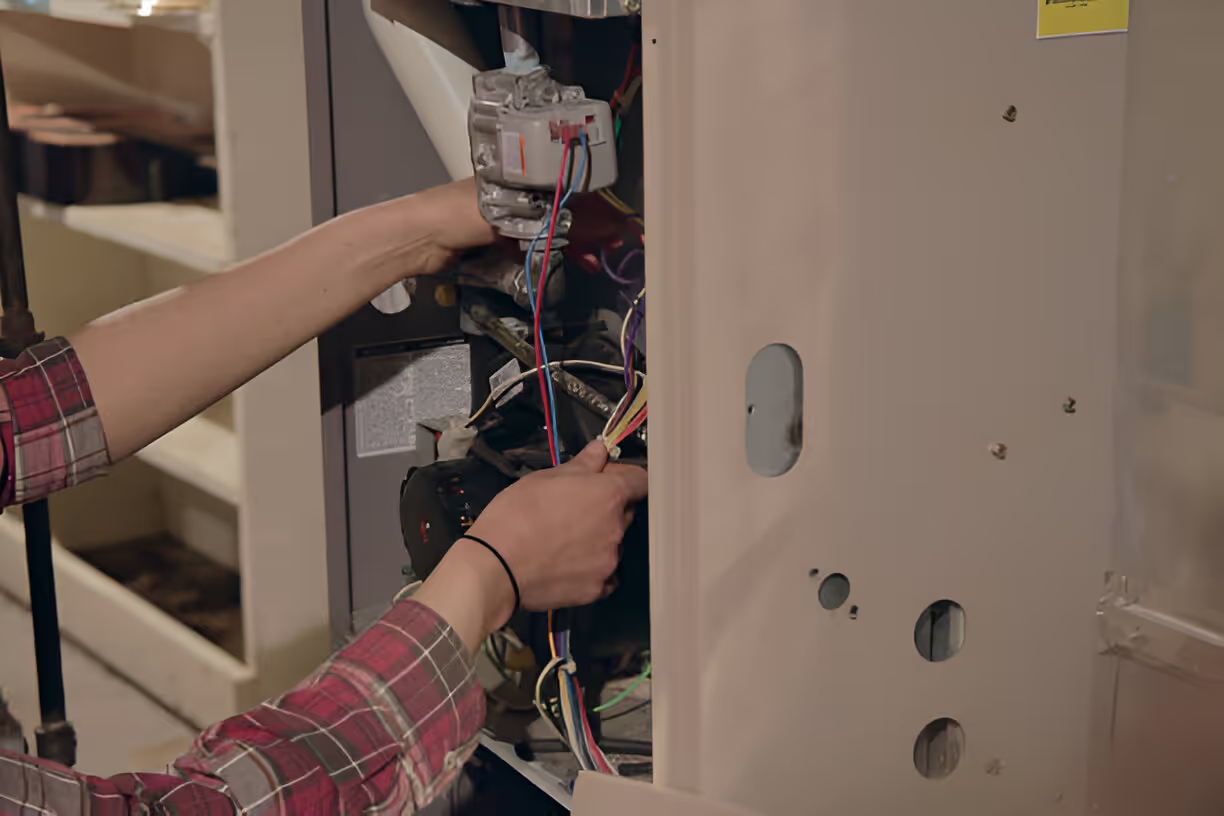Heating Tune-Up in Santan Valley, AZ
A professional heating tune-up in Santan Valley, AZ keeps your home safe, comfortable, and energy-efficient through seasonal temperature swings. Even though winters here are milder than in northern states, heating systems still run during cool desert nights and occasional cold snaps. Routine tune-ups reduce the chance of breakdowns, help your system run more efficiently, and catch safety issues like cracked heat exchangers or ventilation problems before they become emergencies.

Why a heating tune-up matters in Santan Valley
- Santan Valley homes face dusty conditions and monsoon debris that clog filters and outdoor components, increasing wear and reducing airflow.
- Even with a shorter heating season, irregular use can allow ignition and safety components to degrade between cycles.
- Natural gas furnaces and gas piping require combustion and venting checks to prevent carbon monoxide risk in tightly sealed modern homes.
A thorough tune-up tailored to local conditions protects comfort and lowers running costs over the long term.
Common heating tune-up issues in Santan Valley
Many homeowners in the area experience similar problems that a tune-up is designed to identify and resolve:
- Reduced heat output and uneven room temperatures from dirty filters or blocked vents
- Short cycling or frequent on/off operation caused by thermostat or blower problems
- Pilot light, ignitor, or burner issues leading to unreliable ignition on cold mornings
- Noisy operation from worn belts, bearings, or loose panels after dusty seasons
- Poor indoor air quality and clogged condensate/drain lines in heat-pump systems
- Corroded flue or vent problems in gas systems that risk backdrafting or leaks
What a comprehensive heating tune-up includes
A full heating tune-up is an inspection and preventative service package that addresses safety, efficiency, and reliability. Standard tasks performed by certified technicians include:
Inspection & diagnostics
- Visual inspection of furnace, heat pump, or boiler components for wear, corrosion, and leaks
- System performance check and operating cycle observation under load
Thermostat and controls
- Thermostat calibration and programming verification to ensure accurate setpoints and staging
- Check of control board, limit switches, and safety interlocks
Airflow and filters
- Filter inspection and replacement recommendations (or replacement if included in your plan)
- Blower motor and wheel cleaning, belt inspection and tensioning, duct boot checks
Combustion and burner checks (gas systems)
- Burner inspection and cleaning, flame pattern and color check
- Ignitor or pilot verification and flame sensor cleaning
- Heat exchanger inspection for cracks or corrosion that can cause carbon monoxide leaks
Safety testing
- Carbon monoxide check and flue/vent integrity test
- Pressure and safety switch function tests
Efficiency and electrical
- Combustion analysis when applicable to measure efficiency and emissions
- Electrical connections tightness, capacitor and contactor inspection, amp draw checks
Recommended minor repairs
- Tightening or replacing electrical connectors, capacitors, belts, and hose clamps
- Replacing filters, cleaning burners, lubricating motors, and recalibrating controls
- Minor duct sealing or vent clearance to improve airflow
Documentation
- Written service report with findings, recommended repairs, component life estimates, and energy-saving suggestions
Variations by system type
- Gas furnace: emphasis on burners, heat exchanger, flue, and gas valve operation.
- Heat pump/ductless: check reversing valve, defrost cycle, outdoor coil cleanliness, and refrigerant levels.
- Electric furnace/coil: element inspection, contactors, and proper sequencing.
Technicians tailor the tune-up checklist to the equipment in your home.
Expected service intervals
- Annual tune-up: recommended for all heating systems—schedule it in early fall (September–November) before colder nights begin.
- Older systems (10+ years) or homes with heavy dust exposure: consider twice-yearly checks (pre-winter and pre-summer for HVAC balance) to catch wear early.
- Homes with young children, elderly occupants, or combustion appliances inside should not delay safety inspections.
Membership plans and service agreements (what to expect)
Membership or maintenance plans typically include:
- Annual inspection and tune-up scheduling with priority appointment windows during peak seasons
- Filter replacement allowance or discounted supplies
- Discounted labor and parts for covered repairs and waived diagnostic fees for members
- Documentation to maintain manufacturer warranty compliancePlans are structured to provide predictable maintenance, lower overall repair costs over time, and faster service response during seasonal demand.
Benefits of timely tune-ups
- Improved efficiency and lower energy use—clean burners and proper calibration reduce wasted fuel or electricity
- Fewer unexpected breakdowns and longer system lifespan by catching worn parts early
- Enhanced indoor air quality through better filtration and cleaner components
- Verified safety—reduced risk of carbon monoxide exposure and venting failures
- Evidence for warranty and insurance requirements when service records are maintained
Practical tips to extend system longevity in Santan Valley
- Replace or inspect filters every 1–3 months, depending on filter type and dust levels during monsoon season.
- Keep outdoor units and vents clear of leaves, grass, and construction debris, especially after summer storms.
- Use a programmable thermostat or smart schedule to avoid unnecessary runtime while preserving comfort.
- Ensure carbon monoxide detectors are installed and tested regularly on each occupied level.
- Seal and insulate ductwork in unconditioned spaces to reduce heat loss and improve balance.
- Note and report early warning signs: strange odors, sputtering ignition, uneven heat, loud banging or grinding, or unexplained spikes in utility bills.
A professional heating tune-up in Santan Valley, AZ is a targeted investment in safety, reliability, and long-term savings. Proper seasonal maintenance tailored to local conditions will help your heating system perform when you need it most and avoid costly mid-season repairs.






